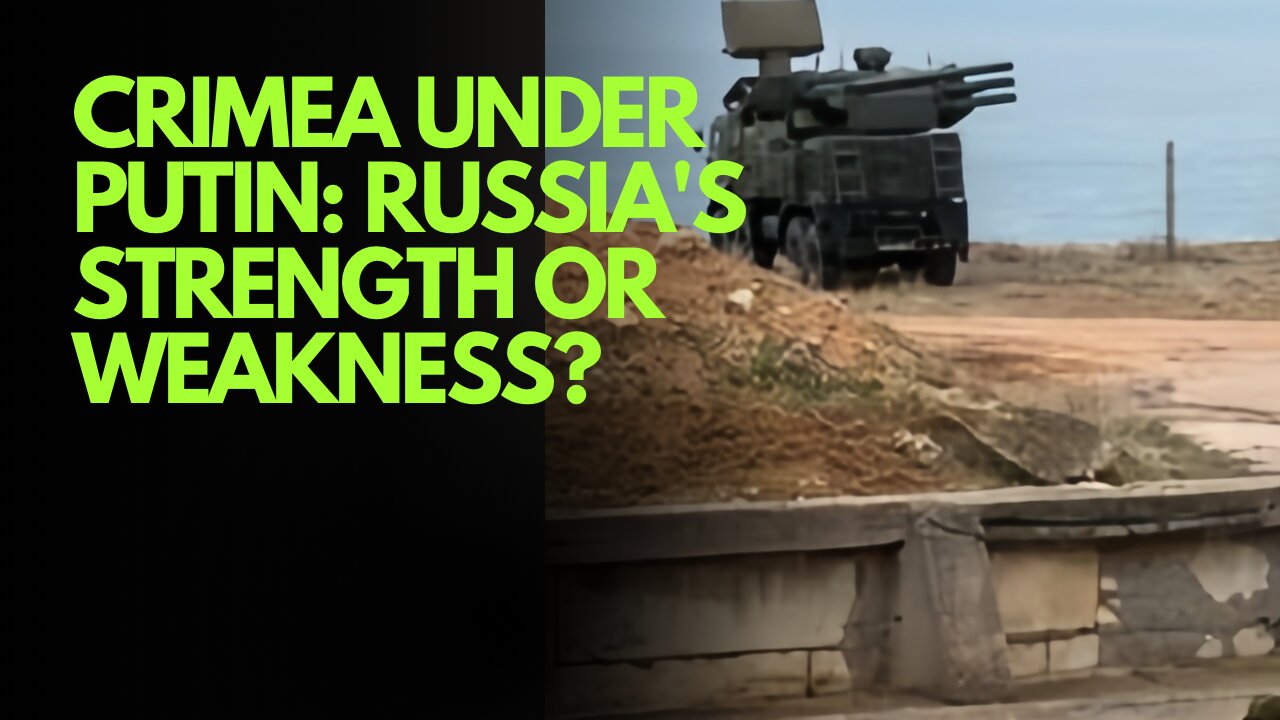Premium Only Content

Crimea Under Putin: Russia's Strength or Weakness?
Putin’s Fortress Crimea: A Bold Gamble in Russia’s Strategic Playbook
When we look at the sweeping militarization of Crimea, it becomes clear that Vladimir Putin is not merely reinforcing a contested peninsula. He is sending a calculated message to Ukraine, the West, and indeed the world: Crimea is non-negotiable, and Moscow is prepared to turn it into one of the most impregnable fortresses of modern warfare.
The decision to flood Crimea with nearly the entirety of Russia’s advanced air defense arsenal is not a routine military adjustment; it is a bold gamble rooted in Putin’s ironclad conviction that Crimea is the crown jewel of his empire. Since annexing it in 2014, the Kremlin has framed the peninsula not just as a strategic outpost but as a sacred prize—politically, symbolically, and militarily. By fortifying it beyond recognition, Putin is effectively drawing a red line: any attempt to retake Crimea will come at a devastating cost.
One of the clearest indications of this intent is the deployment of the long-awaited S-500 Prometey system to the peninsula. Long hyped as a game-changer, the S-500 represents not just advanced technology but a statement of prestige. With its ability to detect threats at 800 kilometers, intercept ballistic missiles, and even target satellites, the S-500 gives Russia a tool that no other military currently possesses in a mobile form. Its arrival in Crimea signals more than tactical necessity—it underscores Putin’s determination to ensure that Crimea is shielded by the very best weapons in Russia’s arsenal.
But what lies beneath this militarization? One hypothesis is that Putin, fully aware of Ukraine’s growing long-range strike capabilities, is racing against time. American-supplied ATACMS missiles and the possibility of strikes on the Kerch Strait Bridge are no longer distant threats; they are immediate realities. By stacking layer upon layer of air defense—from S-500s and S-400s down to Buk-M2s, Tor-M2s, and Pantsir-S systems—Putin is betting on a defense network so dense that Ukraine’s precision strikes will bleed effectiveness.
Another interpretation is more psychological. Crimea has always been central to Putin’s narrative of Russia’s resurgence. To lose it would not only be a strategic disaster but a personal humiliation, undermining the mythology of Putin as the restorer of Russian greatness. In that light, the militarization of Crimea becomes less about rational defense planning and more about a leader staking his legitimacy on an immovable fortress.
Yet boldness often carries risk. By over-concentrating high-value assets in Crimea, Putin may be inviting Ukraine and its Western backers to focus their ingenuity on cracking this fortress. History reminds us that no defense, however elaborate, is invulnerable. Even in recent months, Ukrainian strikes have penetrated Russian defenses, destroying MiG-31 interceptors and attack helicopters on Crimean bases. The S-500 may raise the stakes, but it also raises the profile of Crimea as the single most contested military theater in Europe.
In the end, Putin’s gamble in Crimea is not just about missiles and radars. It is about power, legacy, and the audacity to defy the West by daring them to test his fortress. Whether this bold move secures Russia’s grip on the peninsula—or accelerates its vulnerability—remains an open question.
-
 LIVE
LIVE
Rallied
5 hours ago $8.02 earnedBATTLEFIELD 6 DOMINATION WITH RAL !BF6 #BF6 #Ad
1,450 watching -
 24:23
24:23
MYLUNCHBREAK CHANNEL PAGE
20 hours agoIstanbul Should NOT Exist - Pt 5 of 5
17.5K14 -
 15:31
15:31
Chris Harden
2 days agoOvershadowed by Gary | Lake Station, Indiana
2.2K1 -
 8:27:16
8:27:16
SLS - Street League Skateboarding
19 days agoSLS Paris 2025 🛹 | OCTOBER 11, 2025
401K33 -
 6:15:10
6:15:10
SpartakusLIVE
7 hours ago$120,000 WZ Tourney || #1 Tournament Champion RETURNS
15.7K1 -
 47:47
47:47
Athlete & Artist Show
8 hours ago $0.86 earnedSeason 6 Premiere, NHL Season Preview!
12.1K2 -
 17:17
17:17
Advanced Level Diagnostics
20 days ago $1.03 earnedWhy won't this Mack Truck Charge!
12.8K1 -
 1:33:51
1:33:51
Steve-O's Wild Ride! Podcast
16 days ago $12.08 earnedJohn C. Reilly's Surprising Connection To Jackass (And Beef With Weeman!)
110K22 -
 LIVE
LIVE
StoneMountain64
4 hours agoBattlefield 6 Unlocks and Challenges
69 watching -
 7:34:25
7:34:25
Total Horse Channel
12 hours agoLow Roller Reining Classic | Main Arena | October 11th, 2025
55.5K5